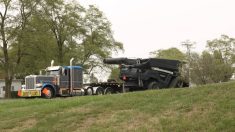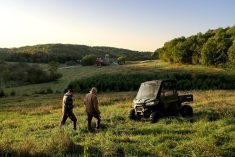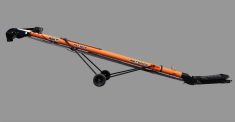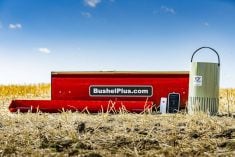Editor’s note: Todd Botterill, of Botterill Sales at Newton, Man., deals with many farmers who are buying or looking at planters.
Lately I’ve been inundated with a wide range of questions about planters. Farmers’ questions range from basic (“What is a planter?”) to detailed (“What difference would I see with a 0.2 mm hole size change in a meter plate?”). At both ends of the knowledge scale, interest in planters is high.
1. Why buy a planter?
New interest in planters seems to be driven primarily by high seed costs. Research shows a very precise seeding system will generally provide farmers with higher potential yields, but investing in a planter, which can offer accurate seed metering and placement, is only worthwhile if seed cost savings outweigh the higher cost of these machines. This began to happen with soybeans when RoundUp Ready plants came out. Now the same thing is happening with canola.
Read Also

Claas brings 1000 Series SP forage harvesters to Canada
In mid-August, Claas unveiled its new line of Jaguar forage harvesters at an event in Visalia, California, deep in the heart of that state’s dairy region.
Initially, standard air seeders weren’t the most accurate at placing seed at a consistent depth. Long frames running over contours created uneven seed depth. The back row of shanks often left less soil on top of the seed than the front ranks. Why seed this way? The equipment was simple and cheap, easy to maintain, and seed was cheap.
Then we saw the growth of the air drill market. Then the precision hoe drill. Each implement was more precise than the last, but also closer to the cost of the planter. When the airseeder was first developed you were looking at a $10 sweep and a $10 boot on a cultivator. Now, with many openers costing $150 per row and the cost of the precision hoe drills, it can be easier many farmers to pencil in a profit after the cost of a planter.
2. Who needs a planter?
Planters aren’t for everyone, but some operations are good potential candidates.
First: very large farms. These operations already run several seeding tools, have multiple tractors and farm enough acres that canola seed savings can add up to serious money. These operations can look at replacing one or two of their drills with a planter, and use it just to plant canola. They may also use the planter for other crops such as soybeans or corn. A planter allows these farms to be more efficient, and also expand crop rotations.
Second: expanding farms. I’ve talked to several farmers that have added more acres and need a larger seeding tool. For example, they have a 50-foot air drill and are contemplating moving to a 70- or 84-foot drill. In an ideal spring, a larger drill will allow them to cover more acres. But in a wet spring, they may have trouble seeding with such a large machine.
Third: smaller farms. These farmers like the ability to save money on canola seed, but are also trying to get higher yields from more exact depth control and increased crop choices.
3. What about canola?
With the increase in canola seed costs, the ability to reduce seeding rates while increasing germination rates has been driving interest in planting canola.
Some research is showing higher germination behind planters than air drills. Initial speculation is that increased seed damage from the air system on an air drill is causing this difference. On a planter seed is typically poured from the bag into a hopper above the row unit. If a bulk fill system is used on a planter there are no manifolds, just a straight shot directly to the row unit. Since that air system is only moving seed and not fertilizer, the air systems can be dialed down, reducing seed velocity and potential damage. A planter can efficiently meter out three pounds of canola per acre (about 180,000 seeds per acre), singulate the seed and space it accurately across the field at a consistent depth.
In the last couple of years, we have seen a huge increase in the acres of soybeans and corn in Western Canada. Although they are relatively new in many areas there have been some great results so far. This change in crop mix, along with increased seed costs, will continue to drive farmers’ interest in planters. †














